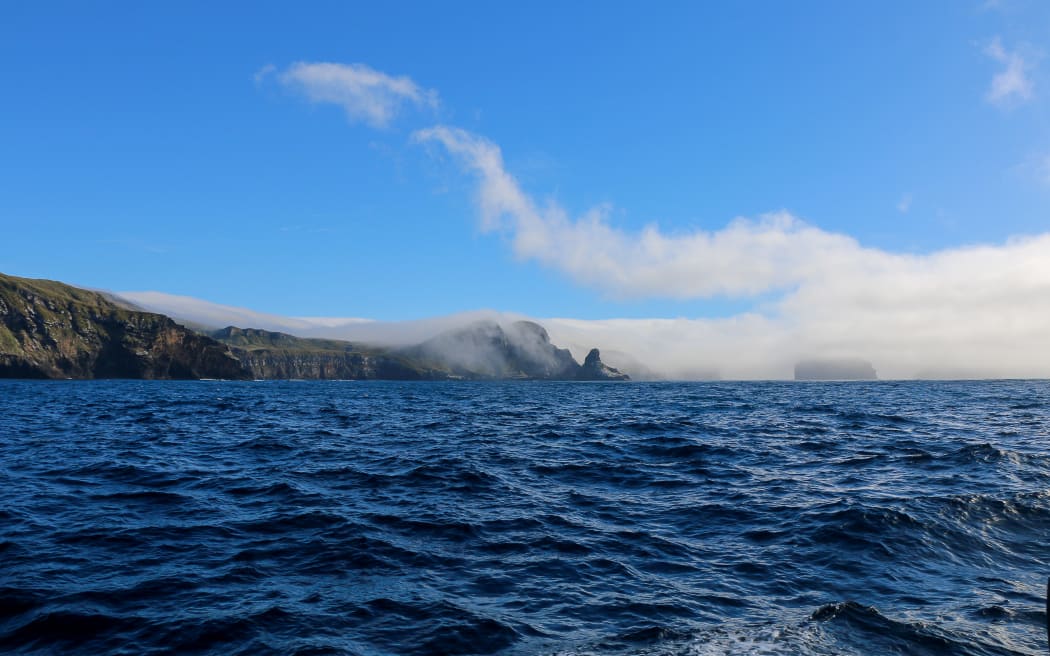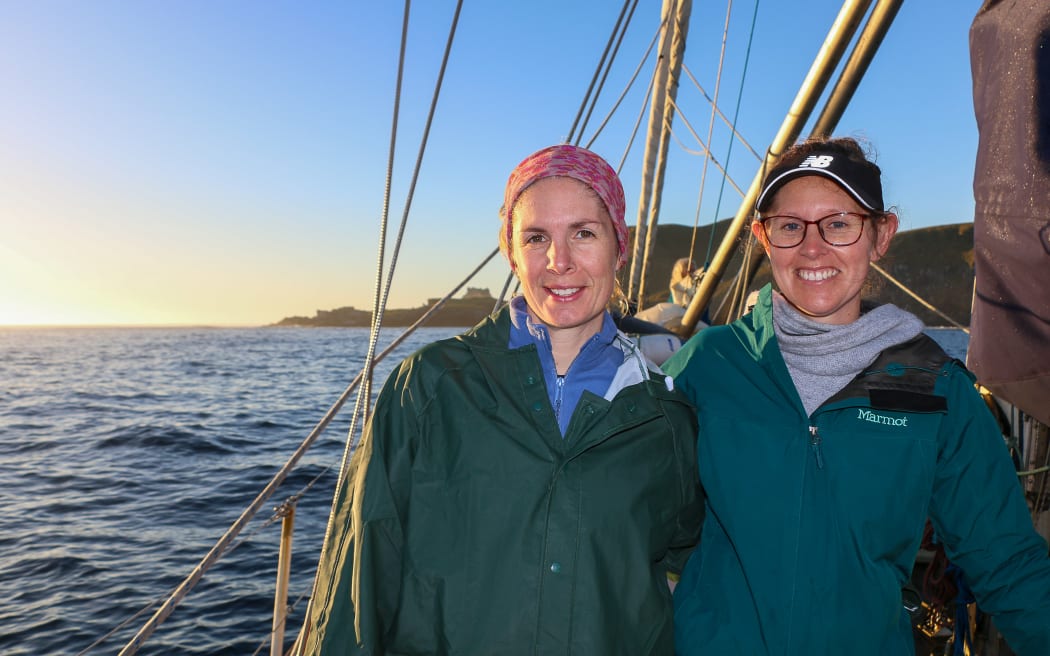
The Antipodes Islands appear out of the mist. Photo: Claire Concannon / RNZ
Follow Our Changing World on Apple Podcasts, Spotify, Stitcher, iHeartRADIO, Google Podcasts, RadioPublic or wherever you listen to your podcasts
Excitement rises on board the expedition yacht Evohe as the largest of the Antipodes islands appears out of the mist.
Department of Conservation rangers Jemma Welch and Erin Patterson will soon be landing to start their task: a whole-island count of the Antipodean albatross. Erin dreams of romping through megaherbs, while Jemma, a self-confessed seabird nerd, will be in her element – 21 species breed here.
It’s an incredible landscape. Tussock growing in pillars up to two metres tall, pipits and snipe and parakeets roaming, albatrosses and petrels floating overhead, fur seals and elephant seal pups hauled up on the rocky coves.
A team of researchers from the Tawaki Project have been here for many weeks, researching the erect-crested and eastern rockhopper penguins that breed on the islands.
Claire Concannon learns about the wildlife that makes this place unique.

Department of Conservation rangers Emma Patterson and Jemma Walsh will be counting albatross on the island. Photo: Claire Concannon / RNZ


